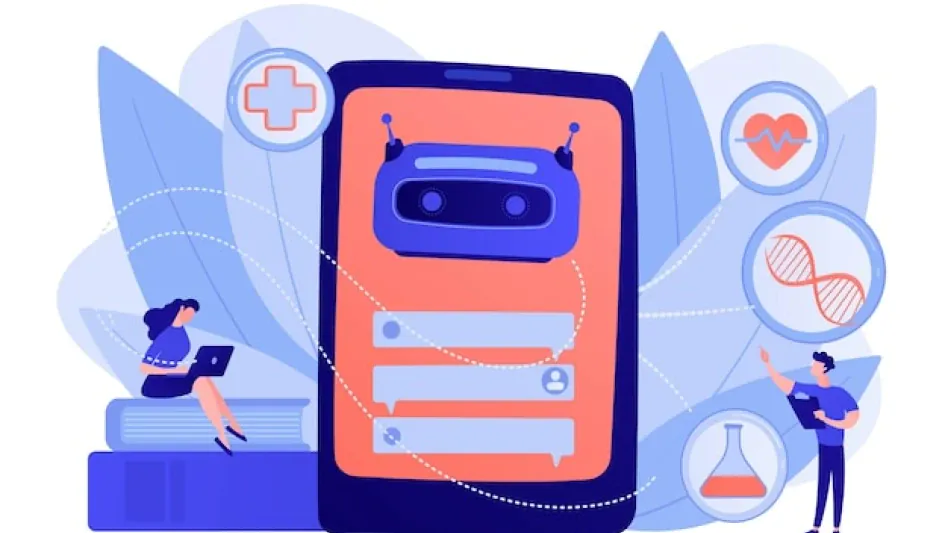The landscape of healthcare technology has dramatically evolved, transitioning from paper records to sophisticated digital systems like Electronic Health Records (EHR). Despite the significant advancements and innovations brought by EHRs, they fell short of the grand promise to provide unified, interoperable healthcare experiences. The use of Artificial Intelligence (AI) in healthcare is currently generating considerable excitement and hope, yet it must address the deficiencies of its digital predecessors to usher in genuine improvements.
The Promises and Pitfalls of EHR
A decade and a half ago, the United States embarked on an ambitious mission to digitize medical records, heralding the widespread implementation of Electronic Health Records (EHRs). With over $30 billion in federal incentives allocated to this endeavor, the aim was to improve efficiency, reduce medical errors, and ultimately enhance patient outcomes. Proponents believed EHRs would facilitate a seamless flow of patient data among providers and transform healthcare delivery.
However, the anticipated vision for EHRs remained largely unrealized as these systems encountered significant barriers to achieving true interoperability. Vendors often prioritized developing proprietary features that catered to organizational needs such as billing, compliance, and regulatory requirements rather than focusing on patient-centric care. As a result, patients frequently faced multiple disjointed portals and fragmented medical histories, which undermined the unified experience that EHRs were expected to provide.
The lack of standardized data systems and the emphasis on organizational efficiency over patient accessibility contributed to the shortcomings of EHRs. While the shift from paper records to digital systems modernized record-keeping and reduced the risk of physical loss, the failure to integrate systems effectively meant that patients still struggled to manage their medical information cohesively. The need for a holistic approach became evident, one that places patients at the center and ensures seamless data flow across the healthcare continuum.
Introducing AI: The New Frontier
Artificial Intelligence (AI) has now emerged as the shining star in the realm of healthcare innovation, promising to address many of the challenges that EHRs could not overcome. AI’s applications in healthcare are diverse, encompassing predictive models for staffing shortages, advanced image-recognition algorithms in radiology, and AI-driven triage systems designed to replace traditional waiting rooms. The potential of AI to streamline processes and significantly enhance healthcare delivery is vast and transformative.
Yet, the critical question remains: Will AI genuinely serve the interests of individuals managing their health, or will it follow the path of EHRs by prioritizing business needs over patient care? The answer largely hinges on how incentives are structured within the healthcare ecosystem. While AI offers unparalleled analytical power, it must be implemented in a manner that focuses on patient-centric outcomes rather than solely optimizing administrative functions.
Drawing lessons from the EHR experience, it is vital to ensure that AI integration in healthcare aligns with the needs and preferences of end-users. Properly structured incentives are essential to driving the adoption of consumer-centric AI systems. Without these, historical patterns may repeat, with technology advancing business efficiency while failing to address the core issues faced by patients in accessing and managing their healthcare information.
Learning from EHR: Aligning Incentives
One of the key takeaways from the EHR experience is that ambition and vast funding alone cannot guarantee success. What is crucial is the alignment of incentives to foster the development of AI systems that cater to end-user needs. Government initiatives can play a significant role in this by linking reimbursements to the usability and interoperability of AI systems. For instance, providers could be rewarded for offering integrated services such as real-time cost estimates and seamless scheduling, ultimately encouraging the development of AI solutions that genuinely enhance patient experiences.
By incentivizing the development of technologies that prioritize usability and patient-centered care, the healthcare industry can avoid the pitfalls encountered with EHRs. The market alone may not spontaneously generate tools that simplify the patient’s medical journey unless such tools become profitable or strategically advantageous for organizations. Therefore, it is essential to create a regulatory and economic environment that encourages the development of AI platforms focused on patient empowerment and accessibility.
Investors typically seek clear returns on their investments, which often leads them to prioritize AI solutions that streamline administrative tasks or identify high-risk claims. While these applications address significant inefficiencies within the healthcare system, they may not necessarily improve the patient experience by making medical data more accessible or transparent. By redefining the incentives, such as tying reimbursements to outcomes that directly benefit patients, it is possible to drive investment towards AI solutions that provide substantial patient value.
The Role of Consumer Expectations
Consumer expectations for seamless digital experiences have grown exponentially, with individuals becoming accustomed to efficient interfaces in industries like retail, banking, and entertainment. This rising demand for convenience is increasingly influencing the healthcare sector, as patients seek similar advancements. Healthcare systems that leverage superior patient portals or telehealth services are already using digital convenience to attract and retain patients, demonstrating the potential for these technologies to gain a competitive edge.
As patients experience the ease of access in other areas of their lives, the lag in healthcare becomes more pronounced. Some healthcare providers are beginning to capitalize on this by offering streamlined online services, making it easier for patients to switch providers or insurance plans based on accessibility and convenience. If these strategies prove successful, significant investments in AI solutions that prioritize patient-friendly interfaces and data consolidation could follow. Investors recognizing this trend may view such solutions as viable long-term growth opportunities, potentially reducing the perceived risks associated with these innovations.
Healthcare systems that champion consumer-centric digital experiences could shift the industry towards more patient-focused AI applications. By meeting the demands for transparency, usability, and integrated patient care, these systems can set new standards that others may follow. As more patients opt for providers with advanced digital services, the market dynamics will likely drive further investment and innovation in technologies designed to enhance the patient experience.
Philanthropy and Impact Investments
Philanthropic and socially conscious funds are also emerging as influential drivers in the development of patient-centric AI in healthcare. Organizations and foundations committed to social equity and usability are increasingly investing in projects that demonstrate potential benefits for underserved communities. These investments, while not always yielding immediate returns, play a critical role in expanding markets and attracting mainstream investor interest.
By directing resources towards AI models that prioritize inclusive data sets, culturally sensitive care pathways, and intuitive interfaces, philanthropic capital can lay the groundwork for patient-centric innovations. These investments help create a more inclusive healthcare environment, enabling startups to focus on designing solutions that cater to diverse patient needs. Although the returns may be slower, these projects have the potential to open new markets and pave the way for broader mainstream acceptance and investment.
Social impact investments can provide much-needed funding for AI projects that might otherwise struggle to gain traction. By prioritizing social equity and patient usability, these investments can help develop technologies that focus on improving healthcare access and outcomes for marginalized populations. These innovations may eventually attract more significant investments as they prove their viability and potential for broader application in the healthcare system.
Indirect Benefits of AI Applications
Not all AI innovations need to be directly patient-facing to drive value within the healthcare system. Improvements in administrative efficiency, such as forecasting emergency room capacity or automating routine tasks, can indirectly enhance patient care by freeing up resources for direct services. These operational advancements contribute to a more efficient healthcare environment, enabling providers to focus more on patient-centered care.
However, it is essential to ensure that these innovations do not merely follow the path of EHRs by enhancing organizational efficiency while leaving patients with disjointed experiences. The key to avoiding this pitfall lies in designing systems that contribute to holistic improvements in patient care. This involves not only streamlining administrative tasks but also ensuring these systems facilitate better data integration and accessibility for patients.
By addressing both direct and indirect aspects of patient care, AI can play a transformative role in healthcare. Innovations that improve operational efficiency should be seen as complementary to those that enhance patient experience. These dual benefits can create a more balanced and effective healthcare ecosystem, ultimately delivering better outcomes for both providers and patients.
Establishing Frameworks for Success
To fully realize the transformative potential of AI in healthcare, it is imperative to establish frameworks that promote user-friendly designs and data portability. Common standards and transparency are essential in counteracting the trend of siloed data systems, which have historically hindered the seamless flow of information. By advocating for these principles, regulators, insurers, and the public can work together to create an environment that favors patient empowerment.
Strategic policy shifts, competitive branding, and dedicated philanthropic efforts can collectively drive the development of AI platforms that genuinely serve healthcare consumers. By focusing on incentivizing interoperability, usability, and patient-centered care, the healthcare industry can promote the creation of AI systems that enhance patient experiences. Establishing clear guidelines and expectations for AI integration will ensure that these technologies fulfill their potential without repeating the mistakes of past digital innovations.
Advocacy for common standards and transparent practices can help break down the barriers to effective data sharing, ultimately leading to a more interconnected and patient-friendly healthcare system. When technology vendors understand that maintaining siloed data systems is no longer sustainable, they will be more inclined to develop interoperable solutions that benefit all stakeholders. Strengthening the business case for genuine patient empowerment through policy changes and market incentives can significantly influence the direction of AI development in healthcare.
Key Takeaway and Future Considerations
The landscape of healthcare technology has undergone a significant transformation, shifting away from paper records to advanced digital systems such as Electronic Health Records (EHR). While EHRs have brought about numerous advancements and innovations, they have not fully lived up to the lofty promise of providing seamless and interoperable healthcare experiences. Now, the spotlight is on Artificial Intelligence (AI) in the healthcare industry, generating much excitement and optimism. However, for AI to truly revolutionize healthcare, it must address and overcome the shortcomings of earlier digital systems like EHRs. The integration of AI holds the potential for groundbreaking improvements, but only if it can deliver on its promise to create a unified, interoperable healthcare system where data flows efficiently, enhancing patient care and outcomes. The journey from digitization to intelligent systems is complex, but the stakes are high, and success could fundamentally change the healthcare landscape.









